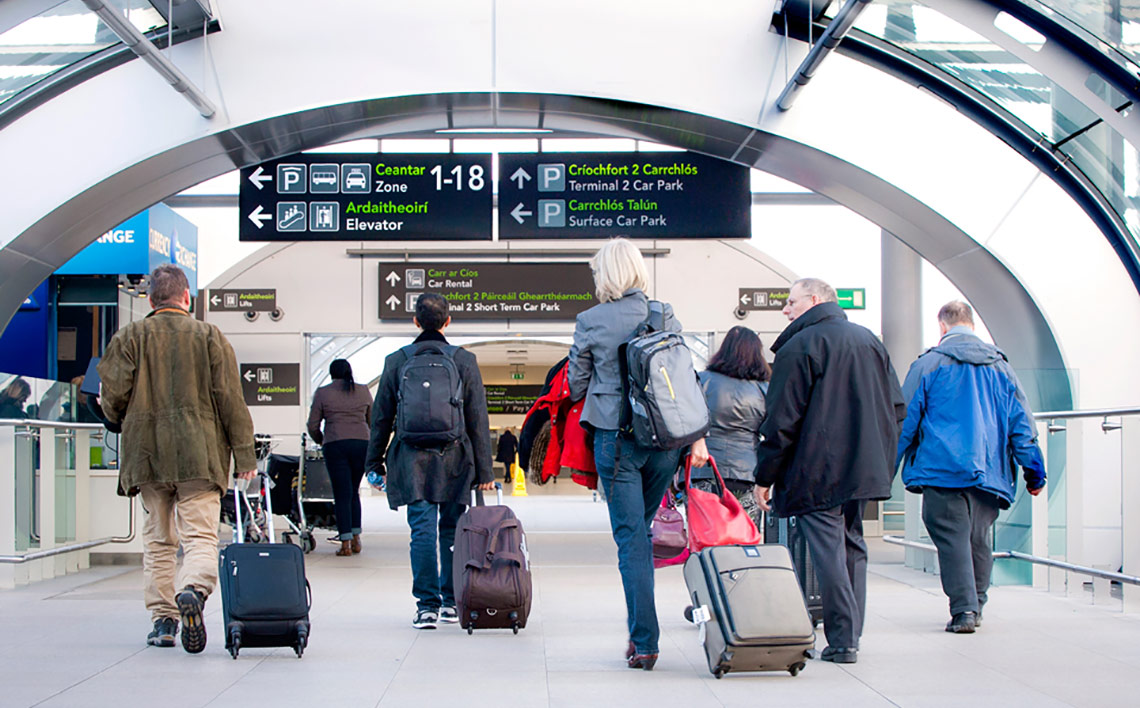
Dublin Airport was the fastest growing major airport in Europe last year, according to new figures released this morning by ACI Europe, which is the trade association for European airports.
Passenger numbers at Dublin Airport increased by 11.5% in 2016, making Dublin the leading performer among the top tier of European airports. Dublin Airport grew faster during 2016 than all other European airports that have more than 25 million passengers per annum.
After Dublin in the major airport category came Barcelona’s El-Prat Airport (+11.2%), Amsterdam’s Schiphol Airport (+9.2%), Copenhagen Airport (+9.1%) and Madrid Barajas (+7.7%).
The growth at Dublin Airport delivered a new traffic record at Ireland’s key gateway, with almost 28 million passengers welcomed last year. An extra 2.8 million passengers used the airport in 2016, while over the past two years, an additional 6.2 million people passed through Dublin Airport.
“This new ACI data confirms that Dublin Airport had a record-breaking performance at home and abroad last year,” said Dublin Airport Managing Director Vincent Harrison. “Passenger traffic across the European airport network increased by 5.1% last year, while Dublin Airport increased its traffic by more than twice that amount,” he added.
The passenger growth at Dublin Airport was fuelled by the launch of 19 new routes last year, while additional capacity was added on 31 existing services. “Almost all our airline customers increased their operations at Dublin in 2016 and we’d like to thank them for their business during the year,” Mr Harrison said.
“Dublin Airport’s passenger performance in 2016 was also assisted by its growth as a gateway between Europe and North America. Transatlantic traffic increased by 16% to a record 2.9 million passengers last year, while transfer passenger numbers were up 23% to a record 1.2 million.”
This year Dublin Airport will welcome three new long-haul services – a year-round service to Doha with Qatar Airlines, a summer service to Boston with Delta Air Lines and a summer service to Miami with Aer Lingus – and three new short-haul services.
Dublin Airport’s growth helped deliver a record-breaking year for Irish tourism in 2016 and also boosted trade and investment. A 2015 study by economic consultants InterVistas showed that Dublin Airport is a key strategic asset for the Irish economy, as it supports or facilitates 97,400 jobs and contributes €6.9 billion to the economy.
Europe’s airports collectively processed more than 2 billion passengers last year, which was a new all-time record, according to ACI Europe Director General Olivier Jankovec.
“While geopolitics and terrorism in particular played an increasing role in shaping the fortunes and misfortunes of many airports, the underlying story is one of continued growth and expansion – with passenger volumes growing in excess of 5% for the third consecutive year,” Mr Jankovec said.
The traffic growth across Europe was due to three main factors according to ACI – improving economic conditions, low oil prices, and airline capacity expansion. Low cost carriers moving upmarket was also a key driver of passenger growth, the trade association noted.
The ACI Europe traffic report, which covers 215 airports, is the only air transport report that includes all types of civil aviation, comprising passenger flights to and from Europe on full service, low cost, charter airlines and others.
Within European Union airports, the average growth was 6.7% last year, while traffic at non-EU airports declined by 0.9%, mainly due to falling passenger numbers at Turkish airports. ACI said that European freight traffic increased by 4.1% last year, registering its best performance since 2010 and confirming the improving economic conditions across the continent.
Europe’s largest airports in 2016 were as follows, according to ACI:
1) London Heathrow – 75.7 million passengers (+1%)
2) Paris Charles de Gaulle – 65.9 million passengers (+0.3%)
3) Amsterdam Schiphol – 63.6 million passengers (+9.2%)
4) Frankfurt – 60.7 million passengers (-0.4%)
5) Istanbul Ataturk – 60 million passengers (-2.1%)
